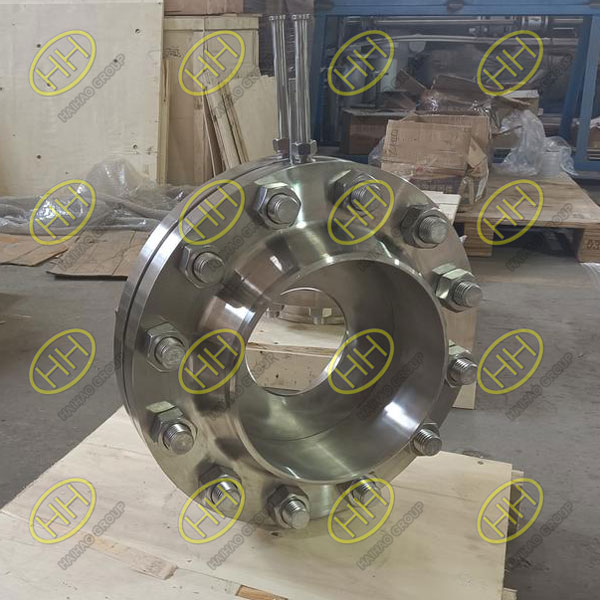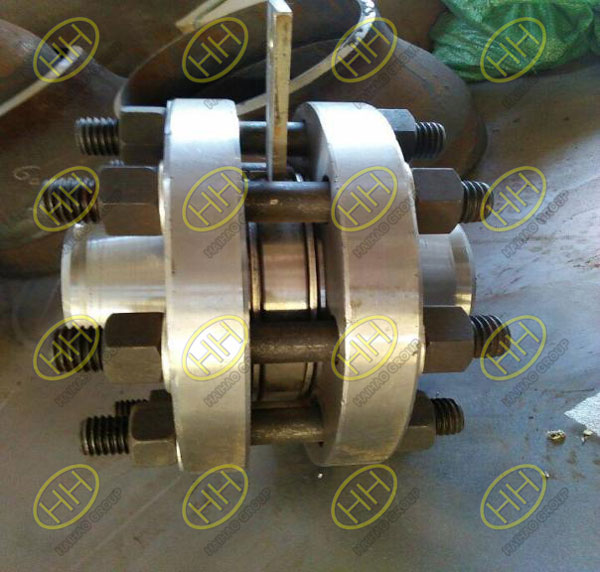How to improve the accuracy of orifice flange flow measurement
Orifice flanges are essential components in flow measurement systems, widely used across industries to measure the flow rate of liquids and gases. To ensure accurate flow readings, it is crucial to follow strict installation practices and pipeline design standards. Haihao Group will take you to understand the key technical requirements that can significantly improve the performance and reliability of orifice flange systems.
Why Accurate Orifice Flange Measurement Matters
Inaccurate flow measurement can lead to serious consequences—inefficient process control, incorrect billing, and system instability. An orifice flange functions by creating a pressure drop across an orifice plate, which is then used to calculate flow rate. Even minor deviations in installation can cause large errors, especially in high-precision industrial applications.
1. Pipeline Design Requirements
To achieve precise measurements, the pipeline upstream and downstream of the orifice flange must meet stringent specifications:
- Straight Length: A minimum straight length of 10D (ten times the pipe diameter) upstream and 5D downstream is typically required to ensure a fully developed flow profile.
- Surface Roughness & Roundness: The internal pipe surface should be smooth and round to reduce flow disturbance.
- Reynolds Number & β Ratio: Measurement accuracy is closely tied to the Reynolds number and the orifice diameter ratio (β). Shortcomings in pipeline configuration may amplify measurement deviations.
✅ Pro Tip: Installing a flow straightener upstream of the orifice plate can help minimize turbulence, aligning the flow for more consistent differential pressure readings.
2. Orifice Plate Installation Best Practices
The orifice plate must be installed with high precision to avoid introducing errors:
- Alignment: The orifice plate’s inlet surface must be perpendicular to the pipeline axis within 1 degree.
- Orientation: Install the orifice plate in the correct flow direction; reversed orientation can cause severe misreadings.
- Gasket Control: The sealing gasket must not protrude into the pipeline. Its thickness should not exceed 0.03D (D = pipe diameter) and must avoid covering pressure tap holes.
- Pressure Taps: Ensure that pressure tapping ports are clean, correctly spaced, and free of any obstructions.
For new installations, it is recommended to wait until the pipeline has been purged and operated under normal conditions for several days before inserting the orifice plate. This helps prevent contamination by residual liquids or solid particles that may damage the plate or affect readings.
Testing and Verification
To further ensure system reliability, conduct the following checks before commissioning:
- Visual Inspection: Verify plate sharpness, concentricity, and surface finish.
- Leak Testing: Test the sealing surface and pressure tappings under system pressure.
- Zero Flow Test: Confirm that the system registers zero differential pressure at zero flow to eliminate baseline error.
✅ Summary: Key Steps to Maximize Accuracy
| Factor | Recommendation |
|---|---|
| Pipeline Straightness | Minimum 10D upstream and 5D downstream |
| Flow Conditioning | Use flow straighteners in turbulent systems |
| Plate Installation Angle | ≤ 1° deviation from pipeline axis |
| Gasket Thickness & Positioning | ≤ 0.03D, no intrusion into tapping or flow area |
| Pre-Installation Purging | Operate the pipeline before inserting the orifice plate |
| Tap Port Cleanliness | Ensure pressure ports are clean and correctly aligned |
FAQ
Q1: What is the ideal straight pipe length before and after an orifice flange?
A: For best accuracy, use 10D (upstream) and 5D (downstream), where D is the internal diameter of the pipe.
Q2: Why is orifice plate orientation important?
A: Reversing the plate disrupts pressure zones and leads to incorrect flow readings.
Q3: How does gasket thickness impact flow measurement?
A: If the gasket intrudes into the pipe or pressure tap zone, it alters flow dynamics and skews pressure readings.
Q4: Can a flow straightener replace straight pipe requirements?
A: In some cases, yes. A flow conditioner can reduce required upstream lengths by stabilizing velocity profiles.
Need Help with Your Orifice Flange Project?
At Haihao Group, we understand how crucial accuracy is in flow measurement applications. With decades of experience in manufacturing orifice flanges, orifice plates, and related pipeline components, we provide customized engineering support, reliable documentation (MTCs, dimensional reports, NDT results), and global shipping services.
Whether you’re working on a new installation or upgrading an existing system, our technical team is ready to support your needs.
Contact us today to discuss your project, request a quote, or get expert guidance on choosing the right orifice flange for your application.



